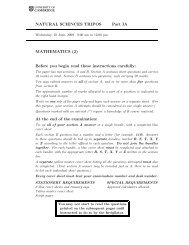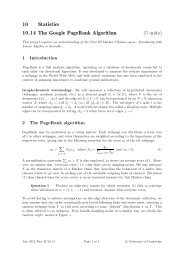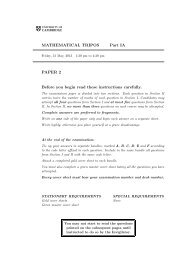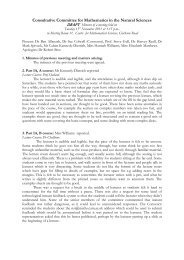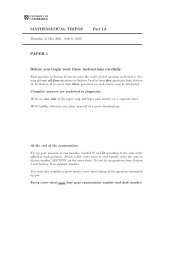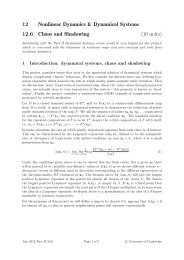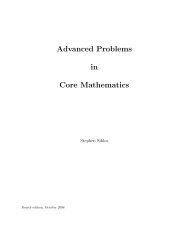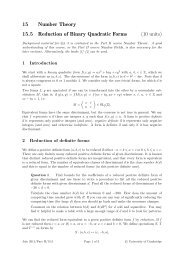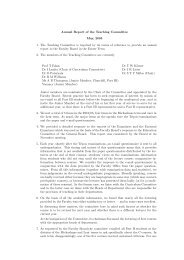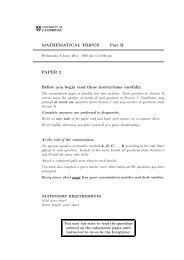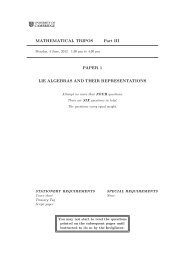MATHEMATICAL TRIPOS Part II PAPER 3 Before you begin read ...
MATHEMATICAL TRIPOS Part II PAPER 3 Before you begin read ...
MATHEMATICAL TRIPOS Part II PAPER 3 Before you begin read ...
- No tags were found...
You also want an ePaper? Increase the reach of your titles
YUMPU automatically turns print PDFs into web optimized ePapers that Google loves.
510D CosmologyThe number densities of protons of mass m p or neutrons of mass m n in kineticequilibrium at temperature T , in the absence of any chemical potentials, are each givenby (with i = n or p)n i = g i(mi k B T2π 2 ) 3/2exp [ −m i c 2 /k B T ] ,where k B is Boltzmann’s constant and g i is the spin degeneracy.Use this to show, to a very good approximation, that the ratio of the number ofneutrons to protons at a temperature T ≃ 1MeV/k B is given byn nn p= exp [ −(m n − m p )c 2 /k B T ] ,where (m n − m p )c 2 = 1.3MeV . Explain any approximations <strong>you</strong> have used.The reaction rate for weak interactions between protons and neutrons at energies5MeV k B T 0.8MeV is given by Γ = (k B T/1MeV ) 5 s −1 and the expansion rate of theuniverse at these energies is given by H = (k B T/1MeV ) 2 s −1 . Give an example of a weakinteraction that can maintain equilibrium abundances of protons and neutrons at theseenergies. Show how the final abundance of neutrons relative to protons can be calculatedand use it to estimate the mass fraction of the universe in helium-4 after nucleosynthesis.What would have happened to the helium abundance if the proton and neutronmasses had been exactly equal?<strong>Part</strong> <strong>II</strong>, Paper 3[TURN OVER



